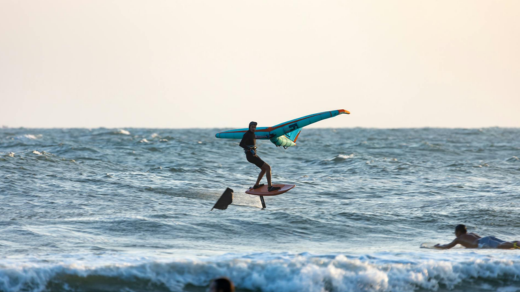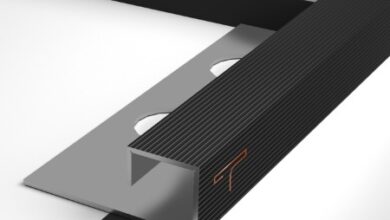Wingfoil Setup & Maintenance: Tips for Longevity

Wingfoiling has exploded in popularity over the past few years, offering riders of all levels the thrill of flying above the water with nothing but wind power and the right gear. But as with any sport that combines wind, water, and equipment, your experience on the water heavily depends on how well you prepare and care for your gear. A well-set-up and properly maintained wingfoil setup not only improves your performance but also extends the life of your investment—saving you time, money, and potential frustration. Whether you’re new to the sport or have been riding for a while, understanding the principles of solid gear setup and thoughtful maintenance is key to getting the most out of every session.
Choosing the Right Setup: It’s All About Compatibility and Simplicity
Before diving into the nuts and bolts of maintenance, it’s important to ensure your gear is properly matched to your skill level and local conditions. Many beginners tend to overcomplicate their setup, assuming that high-end or smaller gear will help them progress faster. In reality, mismatched gear can make the learning curve steeper and compromise the longevity of your equipment. For example, choosing a foil with a surface area that’s too small may force you to push harder in light winds, straining both your gear and your body. Similarly, using a wing that’s too large for gusty conditions can lead to stress on the handles, seams, or canopy fabric.
To start off strong, select a board with enough volume to float you comfortably—ideally 20 to 40 liters above your body weight if you’re a beginner. Pair it with a front wing in the 1600–2000 cm² range for easy lift and early takeoff. When it comes to the wing itself, choose a size based on average wind conditions in your area (typically 4m² to 6m² for moderate winds). These choices may seem basic, but they set the foundation for a smoother setup process and a much longer equipment lifespan.
Pre-Session Inspection: A Five-Minute Routine That Can Save Your Day
Before every session, taking five minutes to inspect your equipment can make the difference between an epic ride and a frustrating afternoon of chasing parts down the beach. Start by laying out your wing on a clean, debris-free surface and checking for visible damage—especially on the leading edge and strut seams. Make sure all valves close properly and the bladder inflates evenly. It’s also a good idea to test the handles or boom for any signs of looseness or wear, which can get worse quickly under load.
Next, inspect your board and foil connection points. Ensure all bolts are properly tightened—use a torque wrench if possible to avoid over-tightening or stripping threads. Look closely at the mast, fuselage, and wing junctions. If you’re using a modular setup, confirm that there’s no play between components, as even minor looseness can amplify vibrations and lead to early material fatigue. While these steps might seem tedious, they become second nature with habit and go a long way in preventing avoidable wear or failures.
Post-Session Care: Rinse, Dry, Store with Intention
It might be tempting to toss your gear in the car and head home after a long session, but this is where a little extra effort pays big dividends. Saltwater, sand, and UV exposure are the silent killers of wingfoil gear. As soon as possible after your session, rinse all parts of your setup with fresh water—including the wing, board, mast, foil, leash, and any screws or tools you used. This is especially critical if you ride in saltwater, as even small amounts of salt left to dry can corrode metal parts and weaken fabric over time.
Once rinsed, allow your gear to dry completely before storing it. For wings, avoid drying them in direct sunlight for extended periods—UV rays degrade canopy material and can weaken stitching. Store them loosely rolled, with the strut deflated, in a dry, cool place. For foils and boards, a padded bag or rack system helps prevent dings and scratches during transport and storage. Taking these steps consistently ensures your gear is always ready to perform at its best and prevents minor issues from turning into costly repairs.
Seasonal Maintenance: Give Your Gear a Deeper Check-Up
Beyond daily and post-session routines, it’s smart to do a more thorough inspection of your entire setup at least once or twice a season. This is your opportunity to clean threads and re-grease bolts, inspect leash cords and harness lines, and assess the overall condition of your gear. Pay special attention to moving or high-stress parts—like leash connectors, swivel joints, and wing handles—as these are most likely to show wear and tear first.
If you notice any corrosion or gunk buildup on metal components, gently scrub them with a nylon brush and apply a corrosion inhibitor like Tef-Gel or marine-grade grease. Check the integrity of your wing’s bladder by fully inflating it and letting it sit for 30–60 minutes in a shaded area to see if any pressure loss occurs. Boards with vent plugs should be tested to ensure no water has seeped into the core. A little preventative effort here can save you from inopportune failures or dangerous situations when you’re far from shore.
Handling Repairs: Know When to DIY and When to Seek Help
Despite your best efforts, accidents can happen. Whether it’s a small tear in your wing or a ding in your board’s rail, knowing how to respond can prevent long-term damage. For minor wing punctures or canopy tears, patch kits often work well if applied on clean, dry surfaces. It’s a good idea to carry one in your gear bag for quick fixes. Likewise, minor foil scratches can be sanded down with fine-grit sandpaper to avoid drag or turbulence.
However, for anything involving structural integrity—like cracks in your mast, delamination in your board, or persistent valve issues—it’s best to consult a professional. Attempting to fix major issues yourself can result in compromised safety and may void manufacturer warranties. Always balance the convenience of a DIY fix with the long-term value of expert repairs.
Final Thoughts: Gear That Lasts Is Gear That’s Loved
Taking care of your wingfoil setup isn’t about being overly cautious—it’s about developing habits that keep you on the water more often, with fewer surprises. A solid routine of inspection, cleaning, and thoughtful storage ensures that your equipment stays reliable, performs at its peak, and gives you years of unforgettable sessions. And while gear performance is certainly important, there’s something deeply satisfying about maintaining your setup with care. It’s a quiet ritual that connects you to the sport beyond the thrill of the ride.


